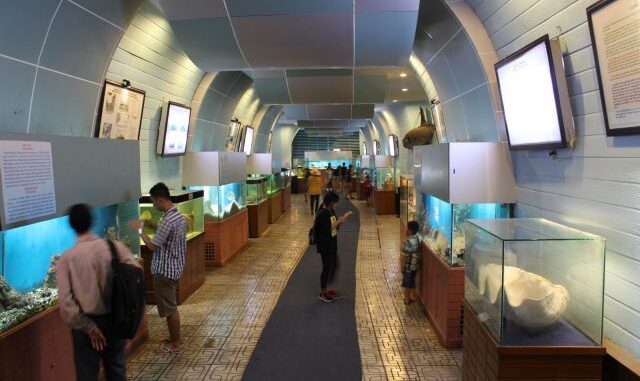
There is no need to dive into the deep sea, just go to Nha Trang Institute of Oceanography and you can admire the world of extremely rich and diverse marine life.
Introduction to Nha Trang Institute of Oceanography
Located on a high land at 1 Cau Da, about 6km from the center of Nha Trang city to Vinpearl Land , Khanh Hoa province, Nha Trang Institute of Oceanography (also known as Vietnam Oceanographic Museum ) is a research facility on oceanography, marine resources and environment, marine physics, hydro-meteorology and marine animals … in the system of specialized research institutes of the Center for Natural Science and Technology Vietnam.
The Institute was established on September 14, 1922 during the French colonial period and under the management of the French, it was not until December 1969 that it was transferred to the Saigon University Institute.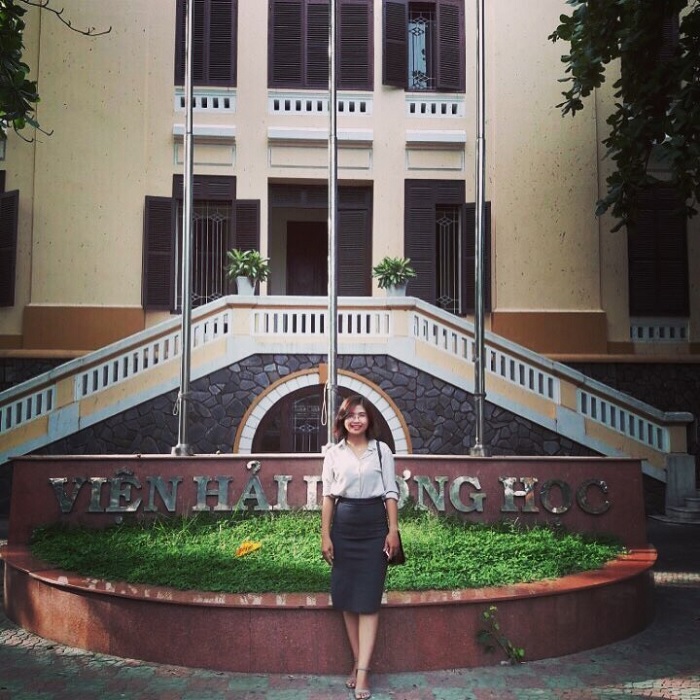 National Oceanographic Museum of Vietnam (Photo @ blackcat211190)
National Oceanographic Museum of Vietnam (Photo @ blackcat211190)
The reason that the Institute of Oceanography is located in Nha Trang city is because the coast is not only the deepest in Vietnam, but also not far from international waters, but there are also two hot and cold sea streams intersecting to create a living environment. It is temperate for marine organisms, so the marine flora and fauna system as well as biodiversity is very rich, providing a rich source of evidence for research.
In particular, this place is also one of the earliest scientific research facilities in Vietnam, which is the place to keep the largest marine biological sample in the country since 2012 in the book of Vietnamese records, is the basis archives and researches Southeast Asia’s largest ocean, and at the same time won the title of “Satisfied tourist destination” in 10 fascinating historical and cultural tourist sites.
Architecture Museum of Vietnam Oceanography
Nha Trang Institute of Oceanography is divided into three main areas, including: Marine biodiversity area, large specimen area and marine resource area of Hoang Sa – Truong Sa.
Marine biodiversity area
With an area of more than 5,000 square meters, including more than 23,000 marine life samples of 5,000 different species, the Oceanographic Research Institute ‘s marine biodiversity display will take you into an oceanic world right on the ground. mysterious and interesting.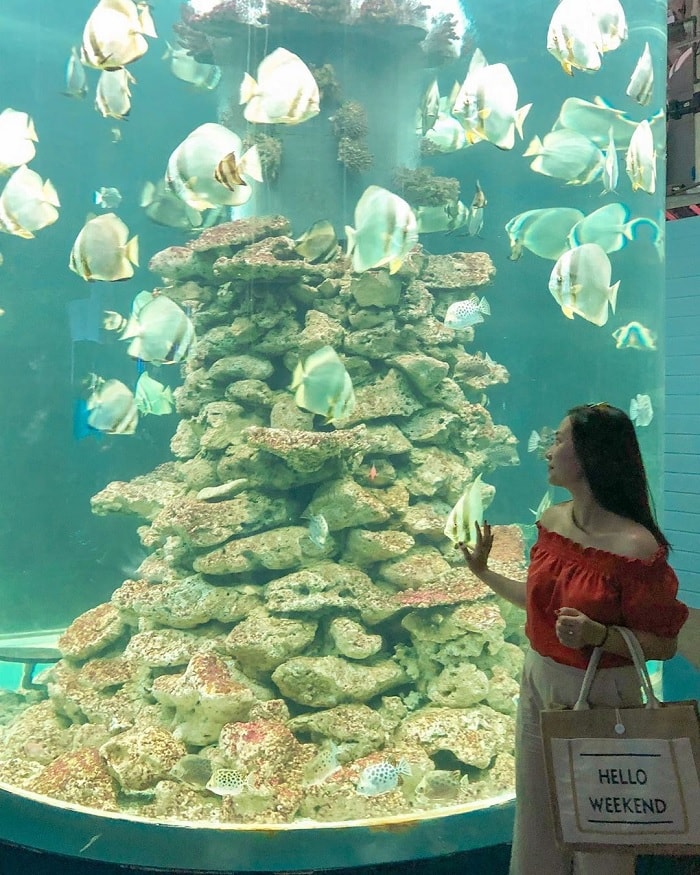 Marine creatures are raised in a glass tank (Photo @ tmyduyen1292)
Marine creatures are raised in a glass tank (Photo @ tmyduyen1292)
You will admire rare marine animals such as sea turtles, sturgeon fish, king fish, Ong Chuong fish, pointed-tailed moonfish, Queen fish, Demon Moon fish, giant clams, seals, sea cucumbers …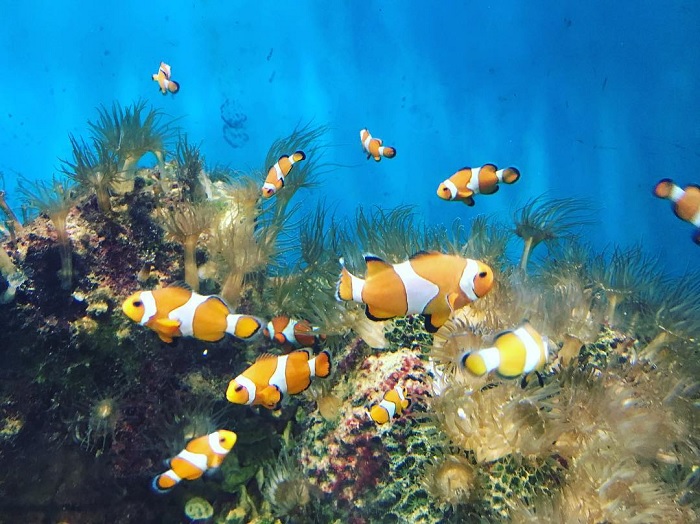 Colorful fishes (Photo @hathyou)
Colorful fishes (Photo @hathyou)
The crustacean group at Nha Trang Institute of Oceanography is also extremely diverse, with about 1,600 species, typically Huynh De crab, lobster, crayfish, Quan Cong crab and giant crab with a span of 1.2m, very admirable.
Or the deep sea creatures such as corals, starfish, seaweed, sinus, seaweed with more than 1,000 species, typically diatoms, blue algae, algae, red algae … not only have many shapes Different enemies but also vibrant colors.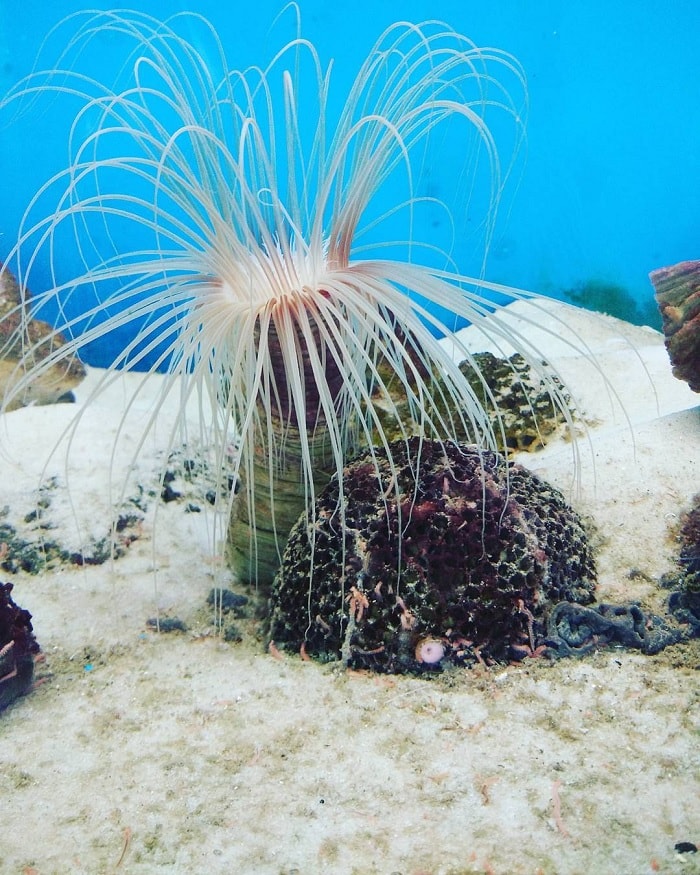 Vibrant marine plants (Photo @ hoangngoc.copywriter)
Vibrant marine plants (Photo @ hoangngoc.copywriter)
Not only marine creatures, the museum also introduces visitors to many valuable resources and minerals of the East Sea, as well as rich ecosystems such as coral reefs, mangroves, sea grass beds … to remind everyone to consciously protect the resources of their children and grandchildren in the future.
Although all of them are placed in glass tanks, it still gives visitors the authenticity of every detail, like standing in the heart of a vast ocean.
Specimen display area
Coming to Nha Trang Museum of Oceanography , you will be delighted with the 200-square-meter super specimen display area, including over 20,000 specimens of more than 4,000 species of marine and freshwater creatures of the Gulf of Thailand. East Sea, Cambodia and surrounding water areas were collected and preserved for many years.
The most typical is the giant humpback whale skeleton that is 26m long, 3m high, has 48 vertebrae and weighs up to 10 tons, which was buried underground in the Red River Delta for at least 200 years before being discovered. .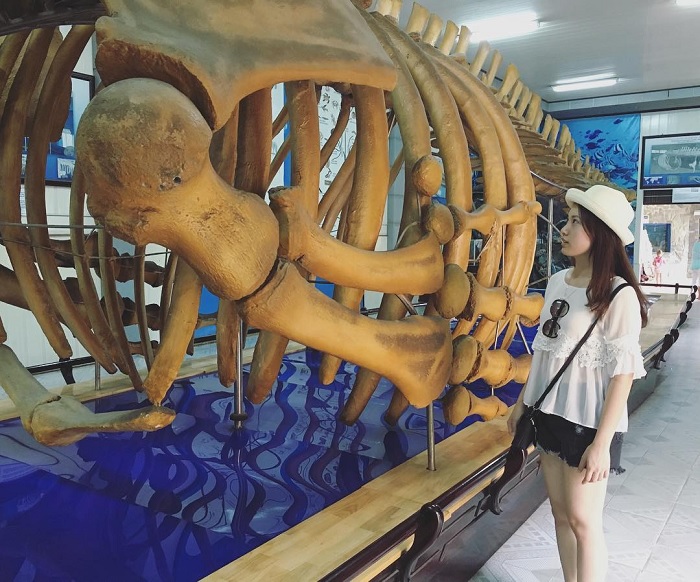 Giant whale bones (Photo @_luhero_)
Giant whale bones (Photo @_luhero_)
Or the bones of a rare and endangered marine mammal such as the Dugong with another beautiful name is the Mermaid, with a relatively high lifespan of 60 to 70 years, which is essential for research and conservation. .
Equally unique fossils are the Lang Hai fish 3.5m long, 5m wide, weighing nearly 1 ton and sturgeon, giant clams … things that you could only see on the TV screen or on the internet. .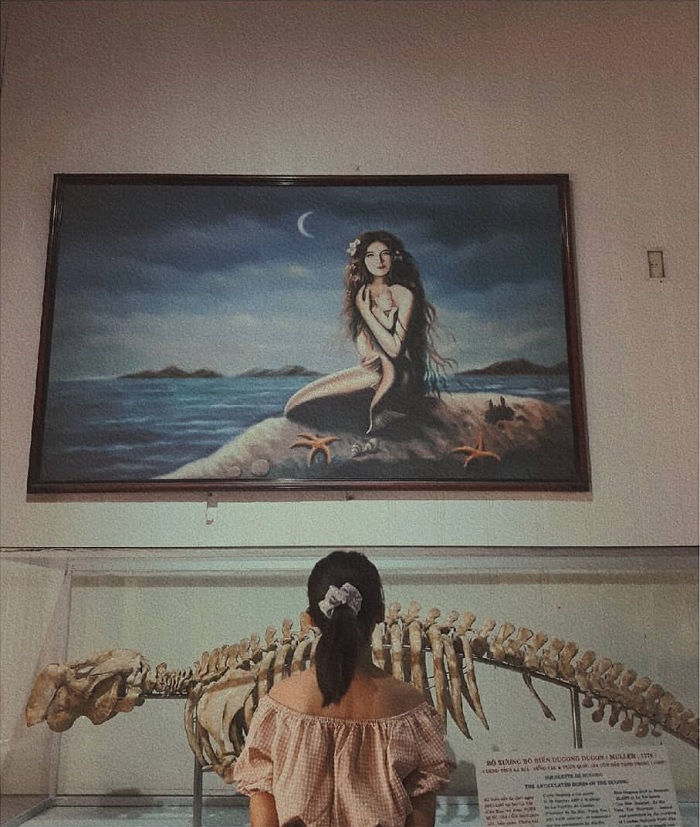 Fish skeleton template (Photo @ hanyuxin_10)
Fish skeleton template (Photo @ hanyuxin_10)
In addition to the bare samples, this area of Nha Trang Institute of Oceanography also has many specimens soaked in containers filled with hormones – preservation subjects, arranged on high shelves and clearly stated the scientific name as well as the name. is often used for each type of individual to keep the specimen intact and not melt.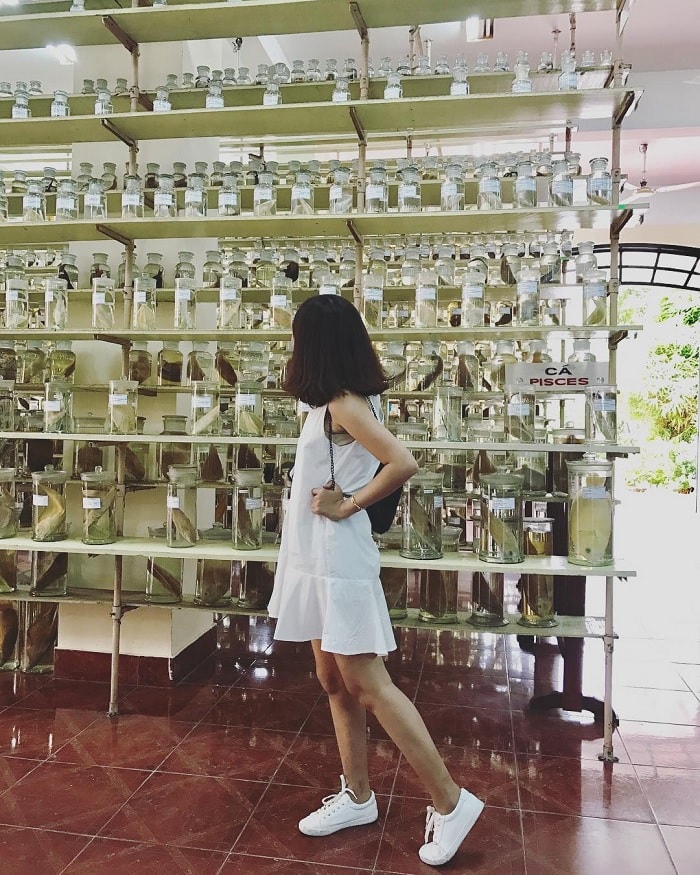 The specimens were preserved in vials (Photo @ loan.loannguyenxx)
The specimens were preserved in vials (Photo @ loan.loannguyenxx)
Hoang Sa – Truong Sa island marine resources area
There is no need to go to the middle of the sea, right on the campus of the Institute of Oceanography in Nha Trang , there is a “little Hoang Sa – Truong Sa” with an area of about 300 m2 of coastline and 3,100 m2 of water surface, specializing in display. unique marine and island resources of the Hoang Sa and Truong Sa archipelagos of Vietnam.
You can freely check – in with artifacts typical of these areas such as sovereignty landmarks, lighthouses, sovereign stele, 3D topographic maps and square trees … or dive under the sea to explore coral reefs that are hundreds of years old with vibrant colors and rich shapes. Sovereignty landmark (Photo @ vi.vi.an.98)
Sovereignty landmark (Photo @ vi.vi.an.98)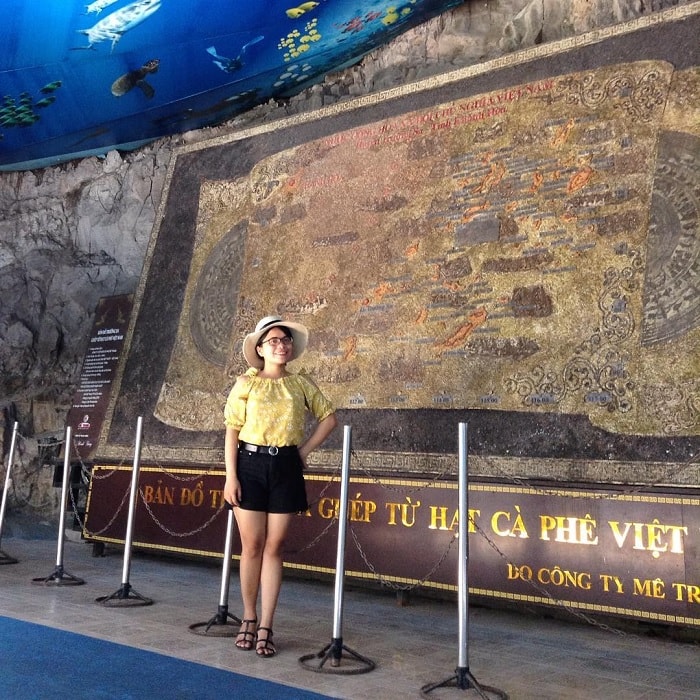 A special map of Truong Sa Island (Photo @thoai_uyenp)
A special map of Truong Sa Island (Photo @thoai_uyenp)
Moreover, this place is also a destination for propaganda and improvement of knowledge about sea and island resources as well as awareness of environmental protection and sovereignty protection of Vietnamese islands.
From all the above can be seen, the Institute of Oceanography is not only a research place for scientists but also an attractive tourist destination of Nha Trang , at the same time it has important educational significance in the protect the marine environment and use marine resources appropriately.
Some notes at Nha Trang Institute of Oceanography
Opening hours : from 6am to 6pm all days of the week.
Ticket price : adult is 40,000 VND / person, student (with card) is 20,000 VND / person, student is 10,000 VND / person, parking is 4,000 VND / car, the audience is entitled to cultural incentives. The elderly, people with severe disabilities will be reduced 50%, while people with particularly severe disabilities, children under 6 years old or under 1.2m in height will receive free admission. Alternatively, you can also contact the museum to hire additional speakers, but there will be an additional charge.
If you want to explore the vast ocean, Nha Trang Institute of Oceanography will give you a trip that is both economical and useful.
